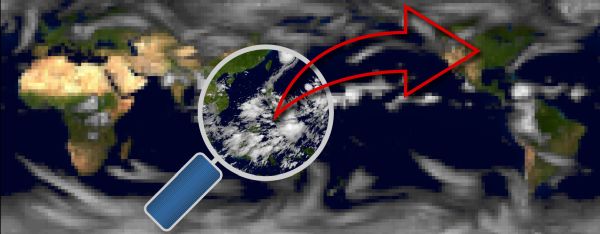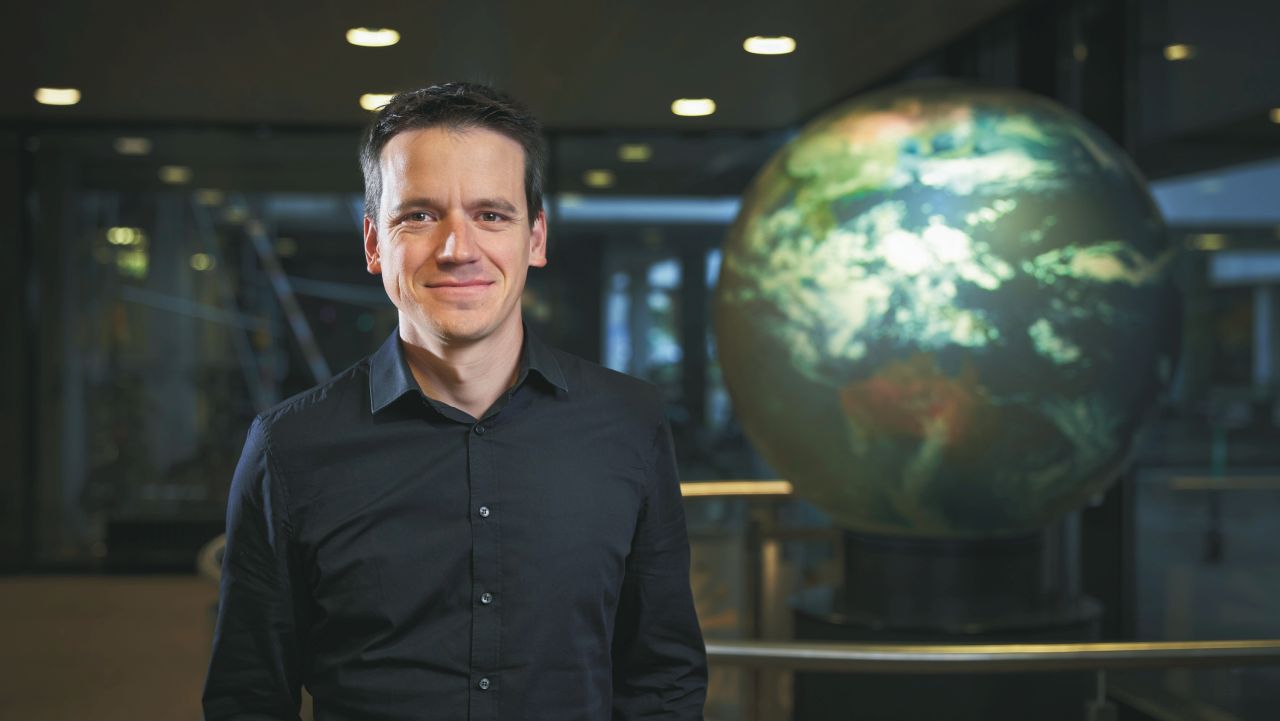Improving weather forecasts and reducing their computational effort to save costs and energy – these are the goals of project ASPIRE. Meteorologist Dr. Julian Quinting at Karlsruhe Institute of Technology (KIT) utilizes recurring signals in the tropical Pacific that have an important influence on atmospheric circulation in Europe. Additionally, he develops machine learning models to imitate the effects of a high resolution. For his project, the young scientist now receives a starting grant from the European Research Council.
In the light of the energy crisis and climate change, the importance of reliable weather forecasts for a time frame between two weeks and two months is increasing. Knowing what the temperatures will be in four weeks can be crucial when estimating a building’s heating requirement and filling gas storages. Accurately predicting extreme weather events like heat waves, droughts, or floods on the other hand helps the authorities and the public to prepare in time, avoiding or reducing potential damage. Dr. Julian Quinting of KIT’s Institute of Meteorology and Climate Research – Department Troposphere Research is working on forecasts in that time frame, called subseasonal forecasts, in his new project ASPIRE (which stands for: Advancing Subseasonal PredIctions at Reduced computational Effort). The European Research Council (ERC) supports the project with a starting grant.
Recurring Patterns with High Predictability
The excellent young scientist and his future working group are not only aiming to improve the precision of forecasts but also to reduce the computing effort, which would save costs and energy and in consequence also reduce greenhouse gas emissions. “My underlying idea is to make more use of sources in the atmospheric system with high intrinsic predictability,” Quinting explains. “These sources are for instance recurring patterns in the atmosphere that vary on the time scale of two weeks to two months.” The meteorologist believes recurring signals in the tropical Pacific to be especially promising as these have a major influence on the atmospheric circulation in Europe. These tropical signals however are insufficiently represented in numerical weather prediction models and thus prevent the full exploitation of the underlying intrinsic predictability. In ASPIRE, Quinting plans to improve the representation of the tropical signals using a high spatial resolution in the tropics. Such a high resolution however typically needs more computing power. To avoid this, Quinting and his working group also develop machine learning models that imitate the effects of a high resolution, helping to reduce the computing effort.

for the mid latitudes more precise – that is the goal of project ASPIRE.
(Photo: Dr. Julian Quinting; Data: NOAA)
New Possibilities for Weather Services
“With ASPIRE, we want to showcase the potential of simulations with locally high spatial resolution,” Quinting says. “Ideally, weather services will be able to utilize existing computing power even better.” If the selected approach proves successful, it could be used for climate research on other components of the atmospheric system that also have a high intrinsic predictability but are incorrectly represented in weather prediction models.
ERC Starting Grant 2022
The ERC funds excellent young scientists that want to start an independent career and establish a working group with starting grants. Every selected project receives up to 1.5 million euros annually for up to five years. Under certain circumstances, up to one million euros can be requested additionally, for example for equipment or access to infrastructure. In the 2022 round of calls, the European Research Council awarded starting grants to 408 scientists based in 26 European countries, 81 of them based in Germany. The ERC starting grants have a total funding volume of 636 million euros. 2932 applications were entered, resulting in an approval rate of 13.9 percent.
More about the KIT Climate and Environment Center
In close partnership with society, KIT develops solutions for urgent challenges – from climate change, energy transition and sustainable use of natural resources to artificial intelligence, sovereignty and an aging population. As The University in the Helmholtz Association, KIT unites scientific excellence from insight to application-driven research under one roof – and is thus in a unique position to drive this transformation. As a University of Excellence, KIT offers its more than 10,000 employees and 22,800 students outstanding opportunities to shape a sustainable and resilient future. KIT – Science for Impact.

